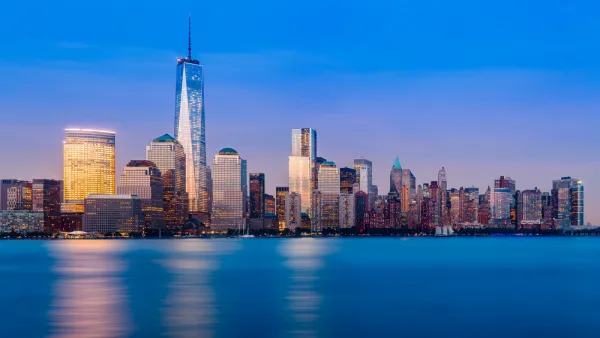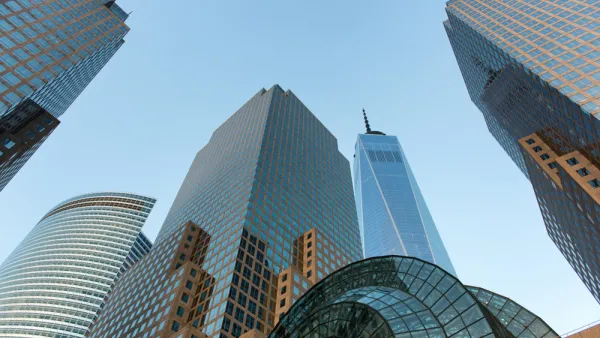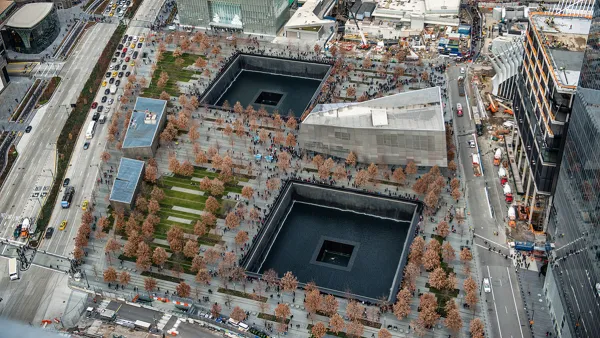David W. Dunlap recounts how the slurry wall built around the World Trade Center's foundations prevented the devastation to Lower Manhattan from becoming much worse, and "became a symbol of resilience in the months and years after the attack."
After it was built over nine months beginning in 1967 "using jury-rigged tools, on a site that brimmed with uncharted obstacles and unhappy surprises", engineer Arturo Lamberto Ressi di Cervia never thought he'd see the retaining wall he helped construct again in his life. But the events of Sept. 11, 2001 changed that.
"Because the slurry wall held, the 70-foot-deep foundation did not fill with groundwater [when the towers fell]. And because of that, the PATH tubes were not submerged. And because of that, the subway tunnels below the PATH tubes were not inundated," explains Dunlap. "How much worse could Sept. 11 have been? Imagine if Hurricane Sandy had followed the terrorist attack by a few hours."
"Thirty-five years later, in 2002, the architect Daniel Libeskind drew the world’s attention to the symbolic significance of the wall, when he proposed its preservation and exposure as part of the redevelopment of the trade center."
FULL STORY: Looking to a Wall That Limited the World Trade Center’s Devastation

Analysis: Cybertruck Fatality Rate Far Exceeds That of Ford Pinto
The Tesla Cybertruck was recalled seven times last year.

National Parks Layoffs Will Cause Communities to Lose Billions
Thousands of essential park workers were laid off this week, just before the busy spring break season.

Retro-silient?: America’s First “Eco-burb,” The Woodlands Turns 50
A master-planned community north of Houston offers lessons on green infrastructure and resilient design, but falls short of its founder’s lofty affordability and walkability goals.

Test News Post 1
This is a summary

Analysis: Cybertruck Fatality Rate Far Exceeds That of Ford Pinto
The Tesla Cybertruck was recalled seven times last year.

Test News Headline 46
Test for the image on the front page.
Urban Design for Planners 1: Software Tools
This six-course series explores essential urban design concepts using open source software and equips planners with the tools they need to participate fully in the urban design process.
Planning for Universal Design
Learn the tools for implementing Universal Design in planning regulations.
EMC Planning Group, Inc.
Planetizen
Planetizen
Mpact (formerly Rail~Volution)
Great Falls Development Authority, Inc.
HUDs Office of Policy Development and Research
NYU Wagner Graduate School of Public Service




























